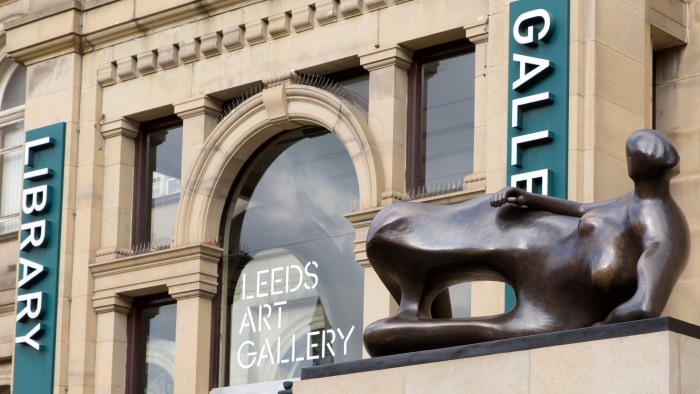Unlock the Editor’s Digest for free
Roula Khalaf, Editor of the FT, selects her favourite stories in this weekly newsletter.
Sotheby’s has approached multiple English councils offering to value their art collections, in a move that critics warned may pressure cash-strapped authorities into selling off valuable public assets.
A letter from the auction house’s Tax, Heritage and UK Museums department sent in January offered to value their top five works “with no further obligation” — although it also included case studies of previous council sales.
Many local governments own large art collections that are displayed in museums and other council-owned properties or kept in storage.
Councils are facing steep cuts in public services or higher taxes as they contend with stretched finances that has seen several declare bankruptcy.
Maurice Davis, a consultant at Cultural Associates Oxford, said it “seems like Sotheby’s is trying to tempt them into thinking about what assets they could strip”.
Sotheby’s has also been under pressure to raise its own profitability, according to people with knowledge of its business, after a year in which global sales fell by a quarter.
“Sotheby’s must be rather desperate if they are going round offering free valuations of works in public collections in the hope of attracting a sale,” said Sir Mark Jones, a former director of the V&A in London who served as interim director of the British Museum last year.
Two regional museum directors warned that selling council-owned artwork would be a betrayal of those who originally donated them, and would also deter future gifts.
“Public collections are at the heart of a successful community,” said Simon Wallis, director of the Hepworth Wakefield, a council-backed gallery.
“If works are sold to attempt to mitigate financial shortfalls for local authorities, the public permanently loses a major valued resource, generations in the making, and the underlying structural problems of local government funding will remain fundamentally unchanged.”
Leeds City Council — which owns Leeds Art Gallery that houses Pre-Raphaelite works by John Everett Millais and William Holman Hunt, paintings by Stanley Spencer, Francis Bacon and L.S. Lowry, and sculptures by Henry Moore and Barbara Hepworth — said it had been approached by Sotheby’s “but have not responded, nor do we intend to”.
Sotheby’s also wrote to Derby City Council, which has delegated the running of Derby Museum and Art Gallery to an independent charitable trust. The institution’s collection of paintings by 18th-century artist Joseph Wright of Derby was valued by the auction house for insurance purposes at £64mn in 2012.
It also contacted councils in Bournemouth, Christchurch, Poole, Calderdale, West Berkshire, Erewash, Horsham, and Lewes and Eastbourne as well as Norfolk County Council, which operates 10 museums.
Kirklees Council in West Yorkshire — which was also contacted — was forced to shelve plans to sell a Francis Bacon painting in the collection of Huddersfield Art Gallery in 2016 after a public uproar and an intervention from the Contemporary Art Society, the charity that donated the work to the council in 1952.

Kirklees and Calderdale said they had declined Sotheby’s offer. Horsham said it may engage with Sotheby’s “in the future”. The other councils did not say how they had responded, and declined to comment further.
In 2014 the Arts Council stripped Northampton Borough Council’s museum and art gallery of its accreditation after it sold an ancient Egyptian statue of a scribe for £15.8mn. The move meant it was ineligible for a range of public funding, and the institution only regained its accreditation eight years later.
Sotheby’s said it “was in touch with local authorities to offer a range of services including valuation, tax, heritage, and collection management”.
It added: “Several authorities have accepted valuations for insurance purposes. No sales have been discussed. No museums were approached. Sotheby’s remains a dedicated partner to UK institutions, supporting them in building their collections and providing assistance through training, loan programmes, and other initiatives.”




